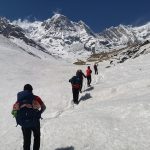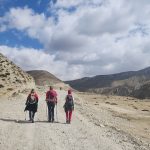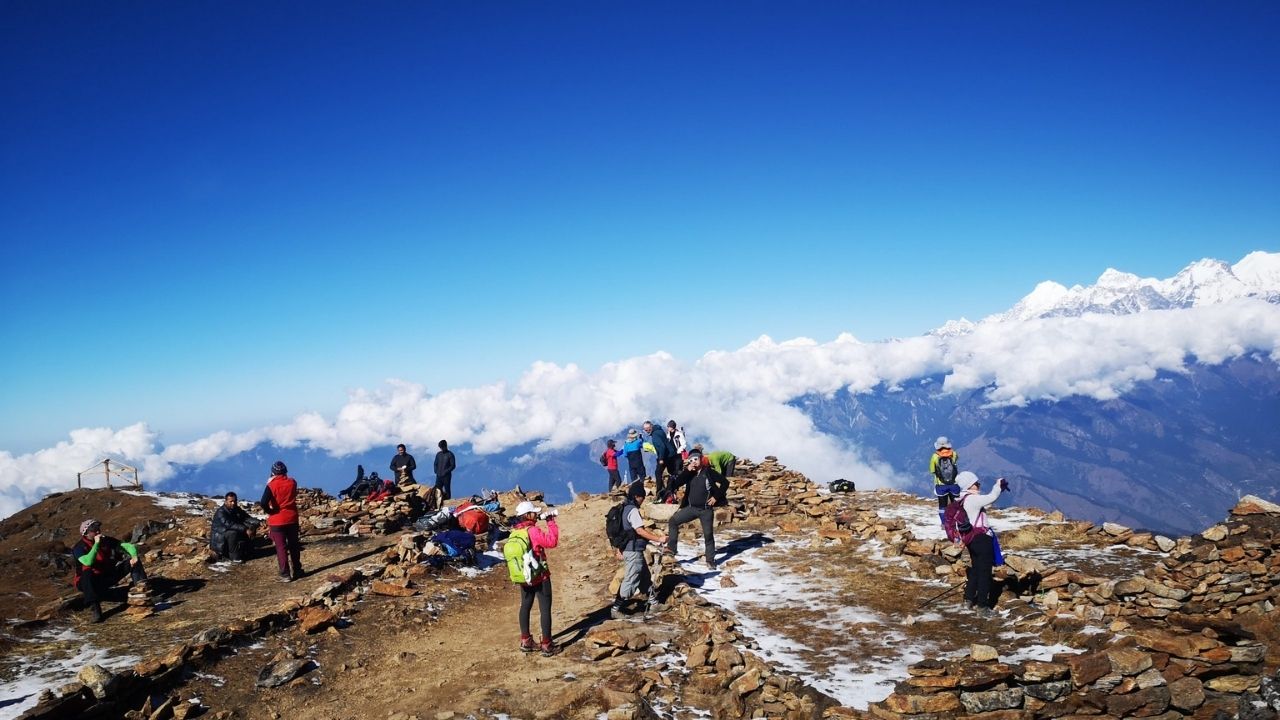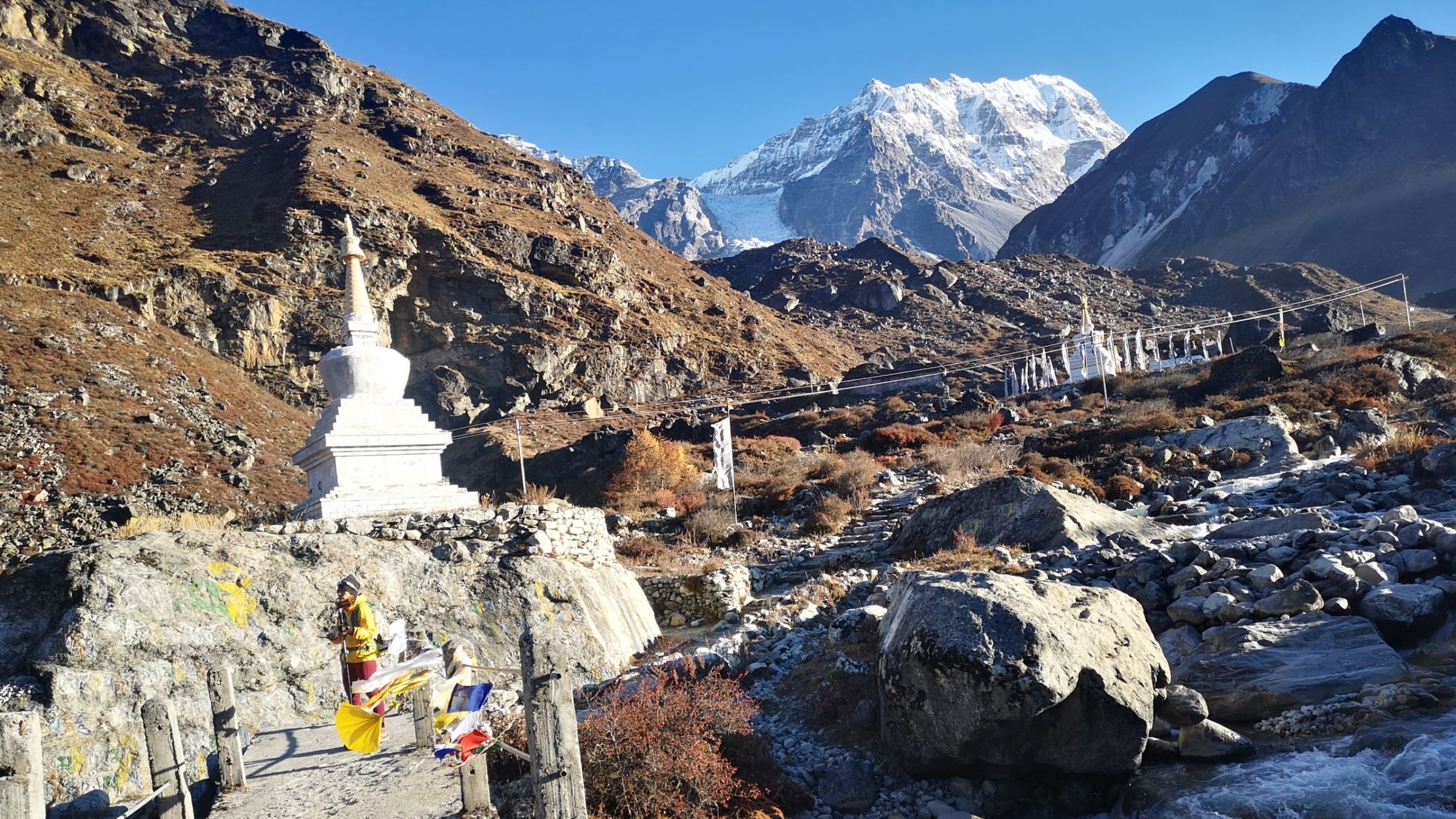
The Ultimate Adventure: Tackling Nepal’s Toughest Trekking Routes
January 29, 2025
Magical Manang: A Piece of Heaven
January 31, 2025
The Ultimate Adventure: Tackling Nepal’s Toughest Trekking Routes
January 29, 2025
Magical Manang: A Piece of Heaven
January 31, 2025The Langtang Trek is a hidden gem in Nepal, offering an unparalleled trekking experience that combines spectacular mountain views, cultural richness, and diverse landscapes. While the Everest and Annapurna treks are world-renowned, Langtang remains a quieter and more intimate option, perfect for those seeking a serene yet adventurous journey through the Himalayan foothills.
Langtang is often called the "Valley of Glaciers" due to the dramatic views of glaciers that dot the landscape, and it provides trekkers with a variety of ecosystems, from subtropical forests to high alpine meadows. The region is home to the indigenous Tamang people, whose culture and way of life enrich the trekking experience.
We’ll take you through everything you need to know about the Langtang Trek—its history, practical tips, essential preparation, and more—so you can embark on your adventure fully prepared.
History of the Langtang Region
The Langtang Valley holds historical and cultural significance in Nepal. It has long been inhabited by the Tamang people, a Tibeto-Burman ethnic group believed to have migrated to the region centuries ago. Tibetan culture heavily influences their traditional lifestyle, which is reflected in their customs, language, and the Buddhist monasteries that dot the valley. The Tamangs are known for their hospitality, and their homes often serve as welcoming stops for trekkers.
Langtang Valley is also historically important as a key trade route between Nepal and Tibet. This route allowed goods such as salt, wool, and other essentials to flow between the two regions for centuries. The Tibetan influence is still very evident in the architecture of the monasteries, chortens (stupas), and prayer flags adorning the valley.

However, Langtang’s history was marked by tragedy in 2015 when a massive earthquake hit Nepal, causing widespread destruction in the region. The Langtang Village, which had once been a thriving settlement, was destroyed by an avalanche triggered by the quake. Many lives were lost, and the local infrastructure was severely damaged. Since then, the people of Langtang have worked tirelessly to rebuild their homes and the surrounding infrastructure, and today, the valley is once again a welcoming destination for trekkers worldwide.
Why Trek Langtang?
The Langtang Trek offers something truly special for adventurers. Whether you're a seasoned trekker or a novice looking for your first Himalayan adventure, Langtang provides an incredible experience with:
- Proximity to Kathmandu
One of the major advantages of the Langtang Trek is its accessibility. Unlike Everest or Annapurna, which require long drives or flights, Langtang is only a 7–8-hour drive from Kathmandu, making it ideal for those who don’t have the time to venture further into the Himalayas. - Fewer Crowds
Langtang remains far less crowded than other trekking routes in Nepal, such as the Everest Base Camp Trek or the Annapurna Circuit. This means trekkers can enjoy a more peaceful and personal connection with nature and meaningful interactions with locals. - Diverse Terrain and Ecosystems
The Langtang region is an ecological wonderland. You'll trek through lush subtropical forests, dense rhododendron woods, bamboo groves, and alpine meadows. As you climb higher, the landscape changes dramatically, offering sweeping views of glaciers, snow-capped peaks, and rugged alpine landscapes. - Cultural Immersion
Langtang is home to the Tamang people and other ethnic groups like the Sherpas. The valley is dotted with monasteries, gompas (Buddhist temples), and traditional villages, offering a rich cultural experience. Trekkers can learn about the Buddhist traditions of the locals and explore their way of life in the highlands. - Wildlife and Natural Beauty
Langtang National Park, established in 1976, is a protected area home to various wildlife species, including the red panda, Himalayan black bear, snow leopard, and diverse bird species. The park is also known for its stunning flora, with rhododendrons, oaks, and pines dominating the landscape.

Trekking Tips for Langtang
While the Langtang Trek is often considered more manageable than some more challenging routes like Everest, it still requires careful planning and preparation. Here are some essential tips to make your trek enjoyable and safe:
1. Get Acclimatized
One of the most important tips for trekking in the Himalayas is properly acclimatizing. Although Langtang is not as high as Everest Base Camp, it reaches altitudes over 4,000 meters, which increases the risk of altitude sickness. Take regular breaks, drink plenty of water, and never ascend too quickly. The acclimatization day in Kyanjin Gompa is essential to allow your body to adjust to the altitude.
2. Pack Light, But Smart
Pack only the essentials, as you’ll need to carry everything during the trek. However, make sure you’re prepared for varying weather conditions. Here are some must-have items:
- Layered clothing: Temperatures vary greatly, so bring lightweight, moisture-wicking clothes and a warm jacket for the higher altitudes.
- Trekking poles: Helpful for maintaining balance, especially during descents.
- Water purification: Carry purification tablets or a water filter, as clean water may not always be readily available.
- First aid kit: A basic kit should include medications for altitude sickness, pain relievers, and bandages.
- Headlamp/torch: Essential for navigating the guesthouses and trails at night.
- Snacks: Energy bars or trail mix can be helpful on long trekking days.
3. Stay Hydrated
Dehydration is a real risk at higher altitudes, so drinking plenty of water is crucial. The thin mountain air can make you feel less thirsty, but consciously try to stay hydrated. Bring a refillable water bottle and treat water from streams or guesthouses with a purifier to ensure it’s safe to drink.
4. Be Prepared for Weather Changes
The weather in the Langtang region can change rapidly, especially at higher altitudes. While the lower sections of the trek are often warm, temperatures can drop significantly as you ascend, especially at night. Bring warm clothing and a good-quality sleeping bag rated for cold temperatures. Also, rain is common during the monsoon season, so pack a waterproof jacket and trekking shoes.
5. Respect Local Culture
Langtang is home to the Tamang and Sherpa people, who follow strict Buddhist traditions. Always be respectful of local customs. When visiting monasteries or interacting with locals, ask permission before taking photos, and be mindful of cultural sensitivities. Offering a warm “Namaste” and respecting their traditions will go a long way.
Langtang’s Unique Ecosystem and Wildlife
Langtang National Park is a treasure trove of biodiversity, and trekking through the region provides an opportunity to experience a variety of ecosystems. The park spans more than 1,700 square kilometers and includes many habitats, from subtropical forests in the lower altitudes to alpine meadows and glaciers in the higher reaches.

The wildlife in Langtang is equally diverse. You might encounter:
- Red Pandas: One of the rarest and most endangered animals in the region, these cute creatures are elusive but occasionally spotted in the bamboo forests.
- Himalayan Tahr: These wild goats are common in the alpine meadows of Langtang.
- Snow Leopards: Although very elusive, these majestic cats are known to inhabit the higher, remote parts of Langtang.
- Musk Deer and Himalayan Black Bears: Both species can be found in the lower altitudes of the park.
Birdwatchers will also delight in the diverse avian species, including the Himalayan Griffon Vulture, Danphe (Himalayan Monal), And Pale Blue Flycatchers.
Conclusion
The Langtang Trek is an awe-inspiring journey that combines dramatic landscapes, rich cultural experiences, and a chance to explore one of Nepal’s most beautiful and less-crowded trekking regions. Whether you're a seasoned trekker or a first-time adventurer, this trek offers a perfect balance of adventure and relaxation, with the opportunity to disconnect from the hustle of daily life and immerse yourself in the natural beauty of the Himalayas.
Langtang is not just a trek; it's an opportunity to connect with nature, learn about the indigenous cultures, and witness the resilience of the local people in the aftermath of the 2015 earthquake. If you're looking for a trek that offers both challenge and reward, the Langtang Valley should be on your bucket list.
